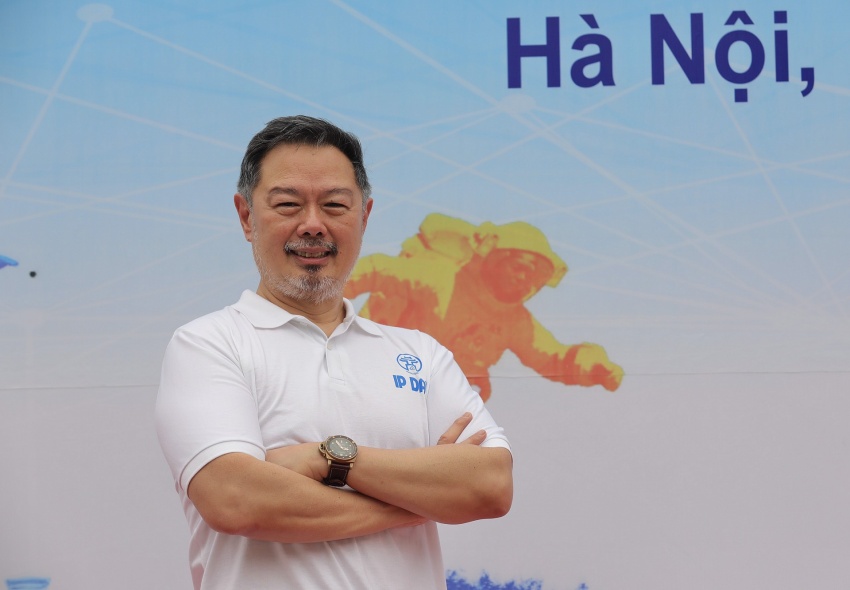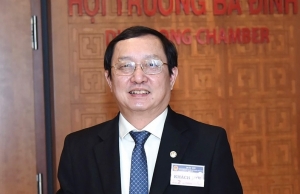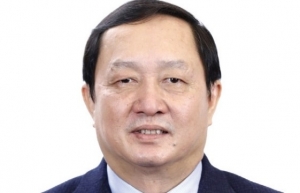Intellectual property key to innovation-driven economy
Why was “Women and intellectual property: accelerating innovation and creativity” selected as the message of World Intellectual Property Day?
With the World IP Day in 2023, we celebrate the ingenuity and creativity of women innovators, creators and entrepreneurs from around the world. Women in all regions are shaping the world through their imagination, ingenuity and hard work, but often face significant challenges in accessing the knowledge, skills, resources and support they need.
 |
| Andrew Ong, Asia-Pacific director for the World Intellectual Property Organization (WIPO) |
Let me quote our director general, Daren Tang, “Our vision is for a more inclusive global IP ecosystem, one with women, youth and small- and medium-sized enterprises at its heart. Our logic is simple: in a world that faces a range of urgent challenges – over health, the economy, the environment and more – it is critical that we support everyone in society to realise their innovative and creative potential.”
For example, gender disparity is demonstrated in the extent women have used the IP system, so WIPO is working to catalyse change and hopefully close the gap through time. In 2020 only 16.5 per cent of inventors named in international patent applications were women. While numbers are going in the right direction, progress is slow. WIPO estimates that, at the current pace, parity among PCT-listed inventors will only be reached in 2056 in Asia.
Societies all around the world have benefited from the work of women inventors, designers and artists, but it is not recognised and benefiting the societal support such as the case of the intellectual property system. That gender gap matters for a number of reasons, perhaps most importantly because gender equality is a human right and because we are better off when women and girls are empowered to make their full contribution to innovation and creativity.
By acting now to enable and support women innovators and creators, we can unlock their potential for innovation culture, strengthen IP and innovation, enrich and drive economic growth.
At WIPO, we have an IP and Gender Champion in deputy director general Lisa Jorgenson. Through her efforts, WIPO now has its IP and Gender Action Plan, which provides a blueprint for the organisation to promote and encourage the engagement of women in IP and innovation around the world.
Last year, WIPO also finalised the Guidelines on Inclusive Language and a Toolkit of Basic Principles for Gender-sensitive Communication. Similar guidelines were prepared by other entities in the UN system.
Recognising the role of intellectual property in promoting an innovation-driven economy, how do you evaluate the achievements IN innovation and creativity that Vietnam has achieved?
Vietnam has had development success over the past decades. To the Organization for Economic Co-operation and Development (OECD), it was one of the fastest growing economies in the world over the last 20 years, driven by inward foreign direct investment (FDI) and export promotion.
In 2019, trade flows relative to GDP reached 210 per cent, the highest value in the world for countries with a population of at least 50 million people. The content of exports has also changed over time, moving from basic agricultural produce in the 1980s, to textiles and footwear in the 1990s and 2000s, and to electronics in more recent years.
Small- and medium-sized enterprises (SMEs) (1-249 employees) employ 47 per cent of Vietnam's labor force and generate 36 per cent of national value added, much less than in the OECD area, although these figures are biased downward by the presence of a large domestic informal sector.
Vietnam is a highly entrepreneurial economy, as shown by high rates of business entry and exit, and high rates of high-growth firms and gazelles, and the quality of the national business environment has improved in recent years thanks to regulatory and the reduction of the corporate income tax rate.
Despite the growth setback as a consequence of the pandemic, the economy of the country will recover, and it is set to meet its ambition to become a high-income economy by 2045.
The IP landscape in Vietnam has also changed and evolved in a very impressive manner over the same period. Some highlights are an IP legal framework in line with international standards; being party to 13 Conventions and Treaties administered by WIPO; 54 institutes/universities/enterprises joining the national network of Technology and Innovation Support Centers (TISCs) in Vietnam; and an increasing interest in and respect for IP among the Vietnamese population
In other words, Vietnam is one of WIPO's success stories, and this is clearly shown in the innovation metrics. Vietnam now ranked 48th out of 132 economies. We salute the visionary leadership and role of the president as he was at the origin of this important development. As former prime minister (2016-2021), he mandated the use of the GII by law. The whole-of-government approach to innovation policy and the GII has clearly produced amazing results, and Vietnam is now moving to implement a provincial/regional level innovation index.
How do you evaluate the cooperation relationship between Vietnam and WIPO in recent years?
At WIPO, we are proud of our strong partnership and rich history of cooperation with Vietnam.
For the first time, Vietnam assumed the role of President of the WIPO General Assembly 2018-2019 and also as a member of the Coordination Committee and the Program and Budget Committee of WIPO for the term 2019-2020
The number of participation from Vietnam in the Academy's courses has increased threefold from 200 to 600 in the last five years. 41 per cent of the participant come from the private sector. The joint offering of DL courses by WIPO Academy and IP Vietnam started in 2008 with the launch of the customized version of the Distance Learning Courses in Vietnamese.
This cooperation has now been expanded to include not only the General Course on IP but also the Advanced Course on Trademark, and the Advanced courses on Patent Information Search.
The IP Strategy until 2030 was the fruit of close collaboration between WIPO and IP Vietnam, which is currently under implementation and which forms the overall framework under which cooperation activities take place.
WIPO helped in the modernisation of IP Vietnam's business services and digitization of industrial property documents which improved operations of registries and databases
Collaboration was extended to the development of a national network of TISCs at research institutes/universities and businesses in Vietnam
WIPO also supported Vietnam's innovation promotion activities, awarding excellent scientific and technical solutions of Vietnam, organising the Appropriate Technology Competition in 2014 and 2018, and organising other training and capacity building activities.
In 2021, Vietnam was the first to receive the WIPO Academy IP Youth Ambassadors award in Asia.
Future cooperation with Vietnam could be at the grassroots level in line with the new thrust of the organisation to bring “IP to everyone, everywhere.”
Together with IP Vietnam, WIPO would like to establish an institutional mechanism to use IP and the IP system as a catalyst for job creation, increased investments, business growth and, ultimately, economic and social development - where women, youth, entrepreneurs, startups, SMEs, researchers, indigenous peoples and other communities, who have not experienced IP, will be able to do so.
Cooperation could also involve addressing the dialogue gap with under-served communities, anyone groups and individuals by the IP system on a 24/7 journey through an online network and social media, so who has an IP question at some time in their entrepreneurial or innovation journey can ask for help and can access WIPO tools and materials.
 | Lessons to learn regarding intellectual property issues According to the ranking of the 100 most valuable brands globally published in 2020 by UK-based brand ranking and consulting company Interbrand, the United States was the country with the most intellectual property assets. specifically, in the top five most valuable brand names in the world, there are four American brands in the technology sector. Although it was reported last year that Apple is now worth over $2 trillion in market value, its brand value is estimated to be around $322 billion, which is nearly equivalent to Vietnam's 2019 GDP. |
 | Taking advantage of IP enforcement The Law on Intellectual Property was issued in 2005 and has since helped regulate legal relations related to intellectual property (IP). However, a lot has changed since 2005. Vietnam is not purely a user of IP, but has transformed into a nation of creating IP assets to serve a deeper growth model. |
 | Conforming to treaty via Law on IP In the last few years, Vietnam has signed a certain number of international trade agreements which require Vietnam to accede to or approve the WIPO Copyright Treaty (WCT) within a prescribed time period. Partner Nguyen Thi Hong Anh and junior associate Vu Hoang Ha Thu of Indochine Counsel take a look at amendments and supplements made in the Law on Intellectual Property in June. |
 | A helping hand for tech edited through IP law The long-awaited Law on Intellectual Property is expected to boost innovation and commercialisation of intellectual property assets in Vietnam once it takes effect in 2023. Huynh Thanh Dat, Minister of Science and Technology, talked to Hoang Giang about the important highlights that will create breakthroughs in the field. |
What the stars mean:
★ Poor ★ ★ Promising ★★★ Good ★★★★ Very good ★★★★★ Exceptional
Themes: Digital Transformation
Related Contents
Latest News
More News
- TECHFEST Vietnam 2025 links startups with policy and capital (December 15, 2025 | 18:21)
- MST to allocate $3.8 billion for sci-tech in 2026 (December 15, 2025 | 18:10)
- Long Thanh International Airport welcomes first Vietnam Airlines test flight (December 15, 2025 | 18:01)
- Health Innovation Hub: accelerating health equity through digital healthcare innovation (December 15, 2025 | 08:00)
- Vietnam’s first AI Law to take effect from March 2026 (December 12, 2025 | 09:00)
- Chi Communications joins SEA CAN alliance (December 11, 2025 | 17:39)
- New Law on High Technology sets incentives and safeguards (December 11, 2025 | 09:00)
- IBTE 2025 to return to Ho Chi Minh City this December (December 11, 2025 | 09:00)
- Masan posts steady gains as Vietnam targets stronger retail growth (December 10, 2025 | 18:58)
- Seafood exports to Japan surge towards new annual record (December 10, 2025 | 18:50)

 Tag:
Tag:
























 Mobile Version
Mobile Version